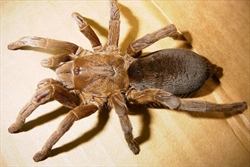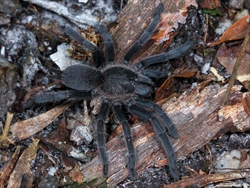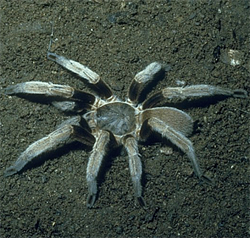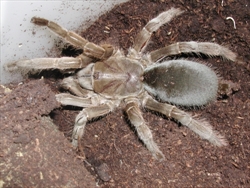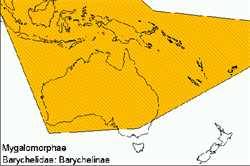Large to extremely large (8–30mm or more) (Figs 1-6).
Fact Sheet
Theraphosidae: Selenocosmiinae
Northern Territory, Western Australia, Queensland, New South Wales, Victoria, South Australia, New Guinea (Fig. 7).
Tropical rainforest, temperate rainforest, open eucalyptus forest, semi-arid areas, desert, intertidal or littoral.
four. PLS segments equal in length; apical segment digitiform.
Caput of females gently raised, higher than thoracic portion; fovea more or less straight.
Eyes eight eyes; group tiny, about 0.3 of headwidth; two rows; rows equal in width; on tubercle.
Chelicerae fangs longitudinal; stridulatory lyra between maxillae and chelicerae (Figs 8-9) or absent; retromargin without teeth; middle row of teeth distinct; intercheliceral tumescence in male absent; rastellum absent.
Maxillae (Figs 8-9) longer than wide; anterior lobe well defined, conical; serrula absent; cuspules numerous, dense, clustered at anterior inner corner.
Labium (Fig. 9) about as wide as long. Cuspules in female numerous, dense; in broad group.
Sternum shield-shaped; with three pairs of sigilla.
Preening combs on metatarsi absent; tarsi with large clavate trichobothria for length.
Claws two; paired claws in female bare; with dense tufts.
Scopula In females, dense on all pedal tarsi and metatarsi.
Cymbium with scopula.
Coremiocnemis, Phlogiellus, Phlogius, Selenotholus, Selenotypus.

